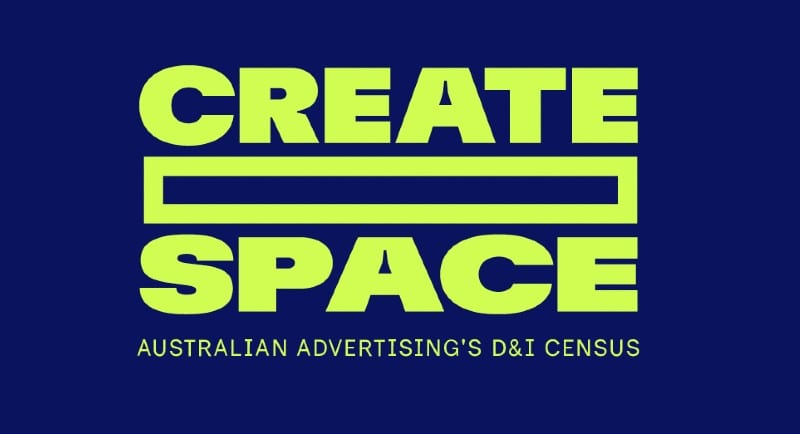The industry’s Inclusion Index Score has fallen by six points since 2021, results from the Advertising Council Australia’s (ACA) second Create Space Census show.
The census, which took place in November last year, paints the latest picture of the local advertising, media, and marketing industry’s demographics and experiences of diversity, equity, and inclusion.
According to the results, the Inclusion Index Score has fallen from 62 to 56, which, according to the ACA, is in alignment with national and global trends, driven by a lower sense of belonging and an increase in negative behaviour. The decline was mirrored by 8 out of 12 markets between 2019 and 2022.
The score was further affected by perceptions of bias around hiring and career progression, insufficient support for skills development, and feeling undervalued compared to colleagues.
At its current number, the local industry’s Inclusion Score is on par with the national norm at 55, measured by Kantar in 2022 – only just ahead of the global advertising, marketing, PR and market research industry benchmark of 54.
ACA’s CEO Tony Hale said that despite the Australian ad industry’s performance aligning with global trends, the drop in rank was disappointing.
“The future of Australian advertising is reliant upon a wide variety of people feeling that they are included and listened to. Average is not good enough,” he said.
“However, the green shoots in the data suggest our strategy is correct and industry leaders are increasingly aware of the importance of DE&I. We must now stay the course.”
The national advertising industry body said close to 2,500 professionals contributed to the anonymous Create Space survey, which follows on from the inaugural 2021 survey, and leverages Kantar’s Inclusion Index to benchmark performance.
The number of women in C-suite and executive management roles has increased from 46% to 54% in the period from 2021 to 2023. Females now dominate all five census levels, also dominating senior staff, middle management, junior management, and intern and junior executive levels.
“It’s brilliant to see female representation at senior levels growing steadily and we now know we have to address equitable career development and training, particularly for people managers, as key drivers of inclusion,” Hale said.
35% of respondents noted significant positive changes to diversity, equity, and inclusion in their company. Overall awareness of companies’ DE&I strategies and policies has increased by six percentage points to 59%.
ACA’s national head of engagement, Hannah Sturrock, added: “Over the past two years, significant effort, time, and money have been invested in creating inclusive workplaces and progressive policies.
“Awareness of inequality and underrepresentation has increased notably. Create Space is here to ensure we remain vigilant and continue to grow both as individuals and as an industry.”
Instances of sexual harassment have reportedly dropped slightly from 6% to 5% overall, and from 8% to 6% for females over the last 12 months. The ACA stated there is evidence of a more open culture, with a 6% increase in people sharing mental and physical health challenges with employers, and a 5% increase in LGBTQIA+ individuals being “out” in the workplace.
WPP ANZ President and D&I Committee Chair, Rose Herceg, said it was encouraging to see some positive changes in the data, which is evidence that agencies and businesses are taking action.
“These are wins. Progress is progress, especially as part of a long-term program that aims to drive systematic change over time,” she said.
“However, there is a perception gap that exists across the industry, with those most likely to report positive changes belonging to the C-suite, being aged over 45, or identifying as heterosexual or male.
“That means the groups most affected by the lack of inclusion and representation are not feeling positive change as much. We need action that makes a difference to all people at all levels.”
There has been a marginal decline in the likelihood of individuals leaving the industry due to exclusion and discrimination from 20% to 19%, similar to in 2021.
However, this number is higher for underrepresented groups and females who have taken parental leave in the past five years, increasing to 23% of females, 27% of LGBTQIA+ people, 30% of Asian respondents, and 28% of females who’ve taken parental leave in the last five years.
See also: ‘Greedy’ and ‘shitty’: Adland urged to stop making parental leave redundancies
Sturrock continued: “Australia’s ad industry has done a good job updating its policies and approach to DE&I but the work must continue to translate strategy and intent into action and accountability at all levels, not just the C-suite where the most change is being seen.
“The six actions in the Create Space Action Plan have proven to be an effective framework. We urge the industry to use them to reflect and reset, as we continue to foster a sense of belonging in the workplace.”
See also: ACA: Advertising industry needs to focus on retention and senior diverse talent
